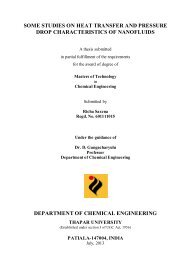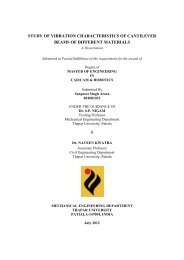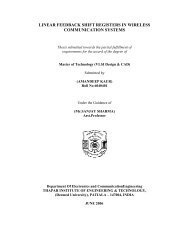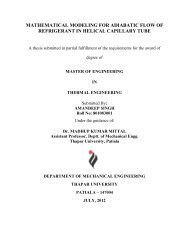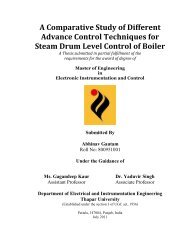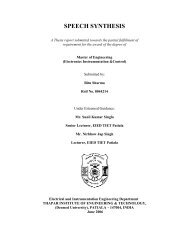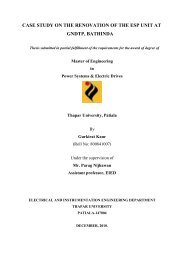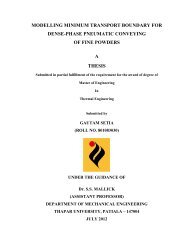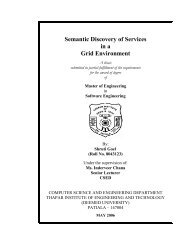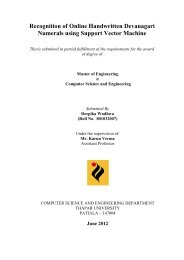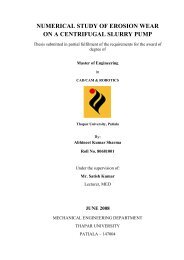from indigenous fermented foods and human gut ... - Thapar University
from indigenous fermented foods and human gut ... - Thapar University
from indigenous fermented foods and human gut ... - Thapar University
Create successful ePaper yourself
Turn your PDF publications into a flip-book with our unique Google optimized e-Paper software.
tract, thus preventing them <strong>from</strong> adhering to IEC <strong>and</strong> also inhibiting them in this micro-<br />
environment by producing organic acids, H2O2 <strong>and</strong> bacteriocin.<br />
Competitive exclusion of two of the selected strains, i.e. L. casei LAM-1 <strong>and</strong> L. delbruckeii<br />
LKH-2, was observed in vitro against representative food-borne pathogens, suggesting a<br />
significant role in prevention of enteric infections.<br />
After screening all six strains for their functional properties, strains displaying interesting<br />
probiotic properties were then chosen for ability to produce bacteriocin. Amongst all, L. casei<br />
LAM-1 elaborated a bacteriocin with wide spectrum of action (gram positive <strong>and</strong> negative food<br />
borne pathogens) <strong>and</strong> stability under high temperature, pH <strong>and</strong> freeze thaw cycles. Most<br />
probably, bacteriocin activity results <strong>from</strong> the sum of several factors; growth-associated <strong>and</strong><br />
stress associated mechanisms added to a possible constitutive production. According to the<br />
derived polynomial as a function of pH, temperature <strong>and</strong> time of incubation, it can be observed<br />
that production of bacteriocin by L. casei LAM-1 is regulated by different physiological factors.<br />
The bacteriocin exhibited bactericidal activity through rapid loss of ATP <strong>and</strong> K + ions by<br />
disruption of cell membranes of target pathogens; cell death was evidenced by live dead staining<br />
<strong>and</strong> scanning electron microscopy followed by transmission electron microscopy.<br />
It is recommended that colonization ability of the above mentioned probiotic isolates must<br />
be further validated through in vivo studies. Overall, this study provides a rationale for the<br />
further use of the selected L. casei LAM-1 <strong>and</strong> L. delbruckeii as probiotics for therapeutic <strong>and</strong><br />
preventive purposes; however a prior clinical trial in <strong>human</strong>s is m<strong>and</strong>atory. The application of<br />
the bacteriocin <strong>from</strong> L. casei LAM-1for commercial purposes as biopreservative is also<br />
suggested.<br />
143



